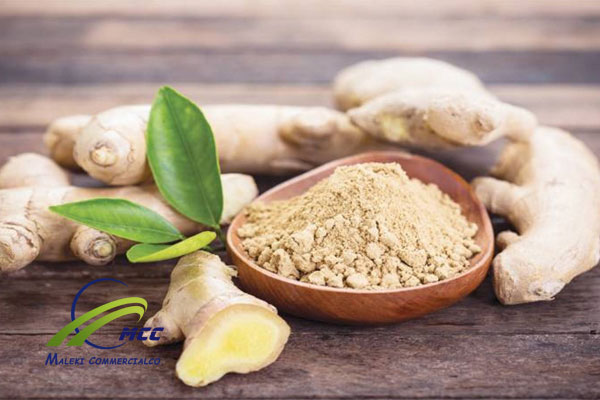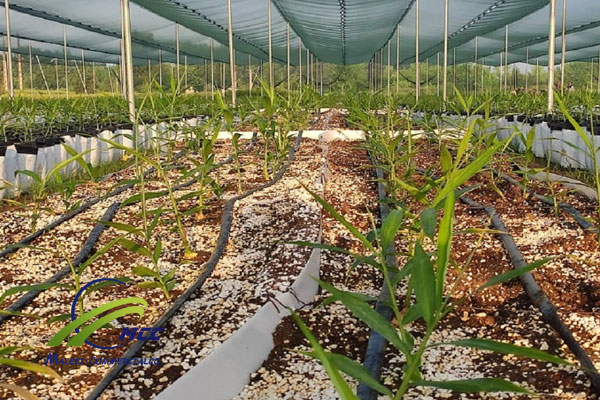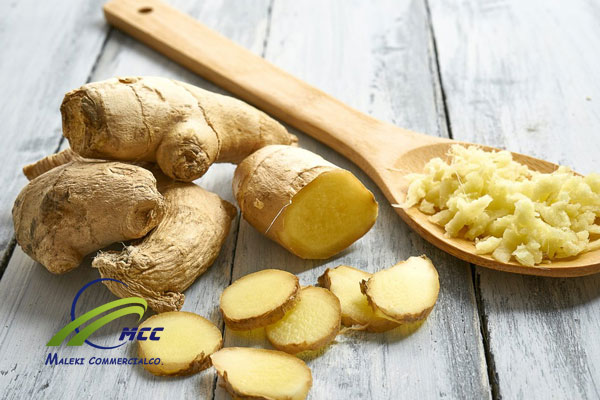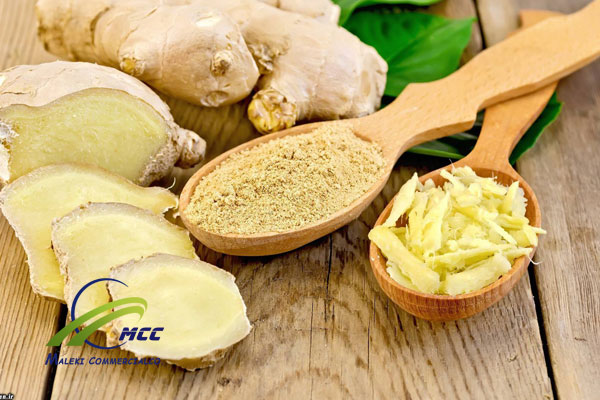All information About Ginger
What is ginger?
Ginger cultivation: Ginger (Zingiber Officinale Rose) belongs to the Zingiberaceae family. This plant has remarkable medicinal properties and is widely used in the pharmaceutical and food industries. It is also one of the most important imported plants.
Botanical characteristics
- Ginger is a perennial herbaceous plant with fragrant underground stems. It has erected stem. The leaves are alternate, simple, narrow, bipinnate and almost without petioles.
- They are 12 to 30 cm long and 1.8 to 2.5 cm wide.
- There are several types of leaves that are linear to lanceolate, glabrous, with prominent midveins and pointed tips.
- The flowers are white or yellow and are on long panicles.
- This plant has a thick and branched rhizome from which the branches originate.
Pharmaceutical part
Rhizome
Geographical distribution
Global distribution
This species is native to India and are cultivated in Latin America, Australia, South and Southeast Asia, and Africa.
Distribution in Iran
Ginger is not cultivated in Iran and is imported.
Ecology of cultivation
- Ginger grows in hot and humid areas and requires adequate moisture, light and temperature.
- This species can be grown between 1500 and 3000 meters above sea level.
- This medicinal plant is sensitive to drought. Water deficit can lead to reduced photosynthesis and rhizome yield in ginger.
- Rhizome formation should not take place at a temperature below 25°C, while a temperature below 15°C will cause this plant to stop growing.
- The use of animal manures and other organic materials helps to increase yields as well as improve product quality.
- The soil should be amended with 75 to 120 tons of animal manure per hectare before planting this crop.
- A pH of 6 to 6.5 is ideal for the growth of this plant.
- For successful planting, it is necessary to add 375 kg of calcium superphosphate and 150 kg of potassium sulfate per hectare.
- This plant requires nitrogen, calcium, phosphorus, iron, zinc, magnesium, boron, superphosphate and potassium sulfate as fertilizers.
Preparation of the ginger soil
- After adding the required fertilizers, the soil should be plowed to a depth of 25 to 35 cm. The soil preparation should be according to the method of cultivation.
- Ginger is very sensitive to waterlogging. Therefore, when preparing the soil surface must be perfectly flat to avoid this problem.
Cultivation time
- Seed-born rhizomes are planted in India during the monsoon rains in early April to early May and mid-December to early April.
- The rhizomes are planted in rows 20 to 55 cm apart and the plants are spaced 20 to 30 cm apart along the row.
- Rhizomes are usually grown at a depth of 4 to 10 cm, depending on soil moisture.
- Smaller seed-born rhizomes are planted at shallower depths, while the thicker and larger rhizomes are grown at greater depths.
Cultivation method for ginger
- Rhizomes are used for the cultivation of this plant. Rhizomes obtained from seeds play an important role in the growth and improvement of this plant.
- Rhizomes play a major role in determining the quality of a product.
- Those rhizomes with stronger vegetative buds can produce larger and more durable seedlings with a higher yield. A strong bud has a round, broad and shorter head, while a weak bud has a curved head.
- The seed rhizomes of this plant are taken out of storage 20 to 30 days before planting. After washing, they are spread on straw and exposed to sunlight for 2 to 3 days.
- Sunlight interrupts the dormancy of the rhizomes by increasing the temperature of the rhizome, which ultimately leads to an acceleration of the growth rate. Then, the rhizomes are placed in straw for two to three days, which decomposes the nutrients in the rhizome and improves its growth.
- For growing this plant, larger rhizomes born from seeds should be used because the larger the rhizomes are, the sooner they germinate and the better the yield.
- For cultivation, these rhizomes should weigh between 30 and 50 grams and have 1 to 2 buds. This is because more buds absorbs more nutrients from the rhizomes and weaken the plant.
- The rhizomes should be disinfected with 3% Mancozeb solution or 1% Malathion for 30 minutes before planting and then cultivated after drying.
- In addition to irrigation before planting, the buds should face upward when planted. These rhizomes will begin to grow within 10 to 15 days after planting.
- Planting density depends on climatic conditions ranges from 11250 to 8225 kg per hectare, which requires 520 to 7500 kg of seeded rhizomes per hectare.
Ginger growth and maintenance
The growth stage of ginger includes the following:
- Adjusting the shading intensity
- Weed control
- Proper irrigation
- Control of pests and diseases
 Shading
Shading
- In the early stages of growth this plant is extremely sensitive to light. Unless shaded simultaneously with other methods of reducing light, temperature, and moisture, the plant will be weakened and the yield will be greatly reduced.
- In the early stages of shading, the following results occur:
- Regular rhizome growth
- Facilitation of agricultural operations
- Extension of the root system
- Larger rhizome
- Moisture retention of the soil
- Note: The branches will be weakened if the shading is too much due to lack of light, which will reduce the yield of the product.
For shading, millet straw is woven into bundles 60-70 cm long and laid out on ginger cultivation plots in China.
Currently, special nets are used to shade large areas.
The use of a cultivator between the rows ensures good aeration of the soil and better growth of the rhizomes.
Mulching
Mulching can promote the growth and yield of ginger. Mulching helps keep the soil moist, protects the bed from rain, stimulates plant growth, increases rhizomes, and doubles the yield.
Weeding
Mechanical and chemical weeding plays an important role in weed control.
It is resistant to herbicides containing the active ingredient simazine and can be used as a pre-emergent.

Regular irrigation
Due to its fleshy and superficial rhizomes, this plant cannot absorb moisture from deep in the soil. Therefore, proper irrigation is essential for its growth.
Pests and diseases
Pests and diseases of this plant are:
- Soft rot (rhizome rot)
- Leaf spot fungus
- Schefflera arboricola fungus
- Mosaic virus
- Perforation pest
- Rhizome scaly pest
Harvesting
- Depending on the climatic conditions in the region, this plant can be harvested 9 to 12 months after planting.
- From 1 to 1.5 tons of ginger can be harvested per hectare.
- The rhizomes can be taken out of the ground by digging pits with a shovel or rake.
- This plant should be dried after it has been washed and cleaned. The proper temperature for drying is 60 o
- Ginger should be stored in a completely dry, cool and dark place
Medicinal-therapeutic properties of ginger
- carminative
- Breast milk increaser
- Chloretic Anti-cough
- Anti-nausea
- Antibacterial
- Anti-flatulence
- Anti-inflammatory
- Antioxidant
- Anti-ulcer
- Anti-blood clotting
- Facilitate blood circulation
- Reduce platelet adhesion
- Reduces body heat
- Treatment of fever
- treatment for diarrhea
- Cold treatment
- Treat the flu
- Headache treatment
- Treatment of anorexia
- Treatment of gastric infection
- Treatment of intestinal infection
- Treatment of whooping cough
- Treatment of digestive problems
- Treatment of irregular indigestion
- Treatment of gastric infection
- Treatment of intestinal infection
- Lowering blood cholesterol
- Treatment of intestinal gastritis disorder
Method of use
Take half a liter of boiling water with ginger rhizome and drink it after brewing.
Contraindications
- Pregnant women
- Lactating women
- People with gallstones
- Consumers of anticoagulants such as Wafarin, Heparin and Aspirin
Precautions
- People with stomach ulcers
- People with intestinal ulcers
- People with kidney stones
Side effects of an overdose
- Ulcers
- Heartburn
- Cardiac arrhythmia
- Weakness of the central nervous system
Note: Please consult your physician before using this herb to treat the disease
Supplier of ginger
According to buyer’s requirement, Maleki Commercial imports the best quality of Ginger cultivation in the form of EXW, FCA, CPT, CIP, DAT, DAP, FOB, FAC,CFR, CIF.
Maleki Commercial, the largest importer of ginger
Maleki Commercial is the largest direct importer of ginger in Iran and Asia. This company provides buyers with the best quality of this plant with a quality guarantee that meets the needs of the buyer.
Our consultants can assist you with bulk purchases.
Ginger importer
HHMaleki commercial is one of the leading global importers of ginger among other companies that export this plant. The company was able to import and supply this plant directly to various countries without intermediaries.
You can rely on this company to provide the best quality products in safe and
standardized packaging when you need the high-quality ginger imported from India.
Ginger price in Iran
Maleki Commercial imports ginger from India at the best price and quality and distributes it to wholesalers across the country.

